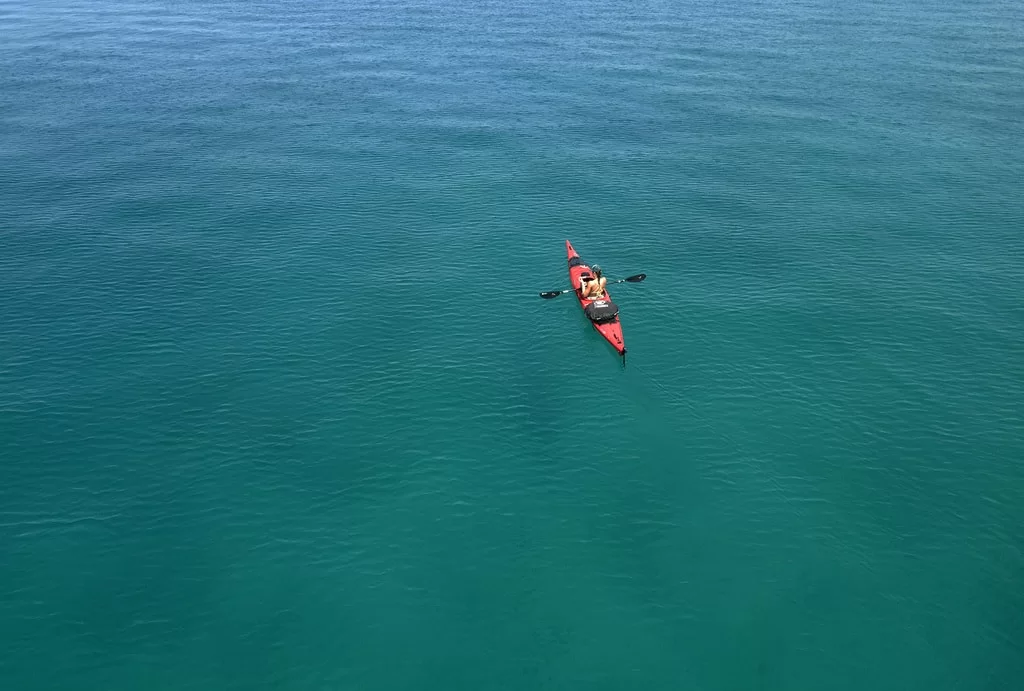Edging is when you tilt your kayak slightly to one side. The key is to hold it firmly at a balance point that enhances control of the boat and lets you do things like carve a more precise turn or turn more quickly. By changing how you edge and balance your boat you can increase your stability and adaptability. Using your weight to balance has many benefits that can help you stay safer and potentially drier on your next paddling trip.

Historically, to balance our kayak we have been taught to lift one side of our boat with our outside knee. By driving that outside knee up, this changes your boat from its primary stability to its secondary stability. Secondary stability is important because it increases maneuverability and, in some cases, overall stability. But just because this is how it has been taught in the past, it may not still be the best way to control and balance your boat.
By using your weight instead of your legs, you free your legs from being the lone factor to being an aid to balance. When you use your outside knee, you are limiting the movement that both your outside knee and your inside knee can do. If you move either knee, your edging and balance can suffer, while if you are using solely your weight to stay in balance on edge, you have both legs to increase your maneuverability and adaptability. Imagine putting your boat on edge to make a turn in any sort of waves. Using your knees to balance by driving the outside up will inhibit your turn because you will need both your knees to maintain balance because of the waves, which in turn would take you off edge or cause a surprise swim. In contrast to this method, using your weight to edge and balance would free your knees and waist to be dynamic and adaptable to these oncoming waves, all while keeping you on edge in your secondary stability. Having this increased control of your boat will also help with your hip snaps. Because you aren’t dependent on muscle tensions to stay upright but instead are using weight and gravity to do this task, your hip snaps will benefit. If you lift one knee right now, you’ll notice that not only are your leg muscles engaged, but your hip flexors, abs, obliques and lower back are triggered as well. Having all these muscles firing inhibits future movements because your balance is already dependent on all these muscles being engaged. Now lean over to the side without moving your legs. Notice that your abs are engaged but your legs, hips, sides and back are unused on both sides. By having these muscles open to maneuverability helps you be versatile in whatever environment you find yourself paddling in. Being comfortable on edge without sculling or bracing is something everyone should practice. If you are comfortable without the crutches of sculling or bracing, those individual skills will increase. By finding both the edge and balance of your tipping point on your “on” and “off” side you will be able to increase control when turbulence or the unexpected hit. By shifting your weight and not only your legs, you will become more familiar with the limits of your boat which in turn lets you push it to the limit with ease.



